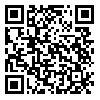BibTeX | RIS | EndNote | Medlars | ProCite | Reference Manager | RefWorks
Send citation to:
URL: http://jdisabilstud.org/article-1-3132-fa.html

 ، سجاد احمدی زاد*2
، سجاد احمدی زاد*2 
 ، معصومه هلالی زاده3
، معصومه هلالی زاده3 
 ، اصغر دادخواه4
، اصغر دادخواه4 
 ، علی کاشی5
، علی کاشی5 

2- استاد، گروه علوم زیستی ورزشی، دانشکدهٔ علوم ورزشی و تندرستی، دانشگاه شهید بهشتی، تهران، ایران
3- استادیار، گروه فیزیولوژی ورزشی، پژوهشگاه تربیتبدنی و علوم ورزشی، تهران، ایران
4- استاد، دانشگاه علوم توانبخشی و سلامت اجتماعی، تهران، ایران
5- دانشیار، گروه علوم رفتاری در ورزش، پژوهشگاه تربیتبدنی و علوم ورزشی، تهران، ایران
چکیده
زمینه و هدف: افراد مبتلا به سندرم داون علاوهبر ناتوانی هوشی ازنظر سطح آمادگی جسمانی و حرکتی در وضعیت مناسبی قرار ندارند. این پژوهش باهدف بررسی تأثیر تمرین منظم بازیهای بومی-محلی بر آمادگی جسمانی مرتبط با سلامت در افراد دارای سندرم داون انجام شد.
روشبررسی: پژوهش حاضر نیمهتجربی با طرح پیشآزمون و پسآزمون با دو گروه تمرین و گواه بود. جامعهٔ آماری پژوهش را افراد دارای سندرم داون بیشتر از هیجده سال مراکز توانبخشی شهرستانهای گرگان و گنبدکاووس تشکیل دادند. از بین داوطلبان ۲۴ نفر انتخاب شدند و بهطور تصادفی در دو گروه مساوی (دوازدهنفری) تمرین و گواه قرار گرفتند. آزمودنیهای گروه تمرین برنامهای تمرینی شامل ده بازی بومی-محلی (نون بیار کباب ببر، گردو شکستم، دستمالقاپی، هفتسنگ، دال پلان، فرفرهبازی، کلاهبران، چهارخونهبازی، اتل متل توتوله، موش و گربه) را در دو نوبت صبح و بعدازظهر بهمدت دوازده هفته اجرا کردند؛ درحالیکه آزمودنیهای گروه گواه هیچگونه فعالیت ورزشی منظمی نداشتند. قبل از برنامهٔ تمرین و دو روز پس از آخرین جلسهٔ تمرینی متغیرهای آمادگی جسمانی شامل شاخص تودهٔ بدنی، اندازهٔ دور شکم، قدرت عضلانی مچ دست راست، قدرت عضلانی مچ دست چپ، استقامت قلبیعروقی، انعطافپذیری عمقی تنه و استقامت عضلانی اندازهگیری شد.
یافتهها: نتایج نشان داد، انجام دوازده هفته بازیهای بومی-محلی بهاستثنای شاخص تودهٔ بدنی (۰٫۰۷۷=p) و اندازهٔ دور شکم (۰٫۴۸۴=p)، توانست بر سایر متغیرها شامل قدرت عضلانی مچ دست راست (۰٫۰۱۲=p) و قدرت عضلانی مچ دست چپ (۰٫۰۱۸=p)، استقامت قلبیعروقی (آزمون شش دقیقه پیادهروی) (۰٫۰۳۱=p)، انعطافپذیری عمقی تنه (۰٫۰۰۳=p) و استقامت عضلانی (۰٫۰۰۱=p) آزمودنیها تأثیر معناداری داشته باشد.
نتیجهگیری: براساس یافتههای تحقیق نتیجهگیری میشود، انجام منظم بازیهای بومی-محلی در افراد دارای سندرم داون، عاملهای آمادگی جسمانی مرتبط با سلامت را بهبود میبخشد و برای ارتقای سلامت، اجرای این تمرینات به مربیان آنها توصیه میشود.
| بازنشر اطلاعات | |
 |
این مقاله تحت شرایط Creative Commons Attribution-NonCommercial 4.0 International License قابل بازنشر است. |


